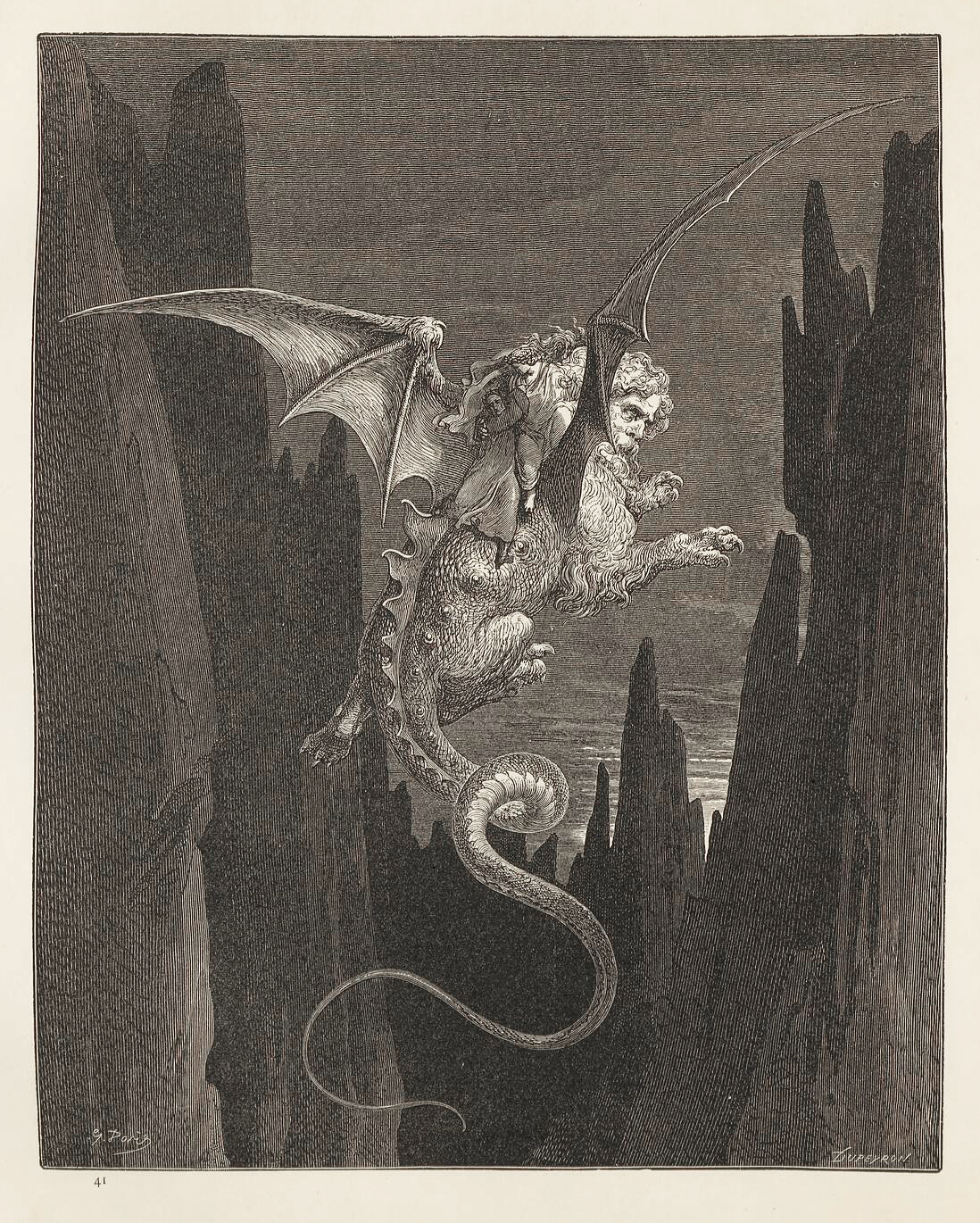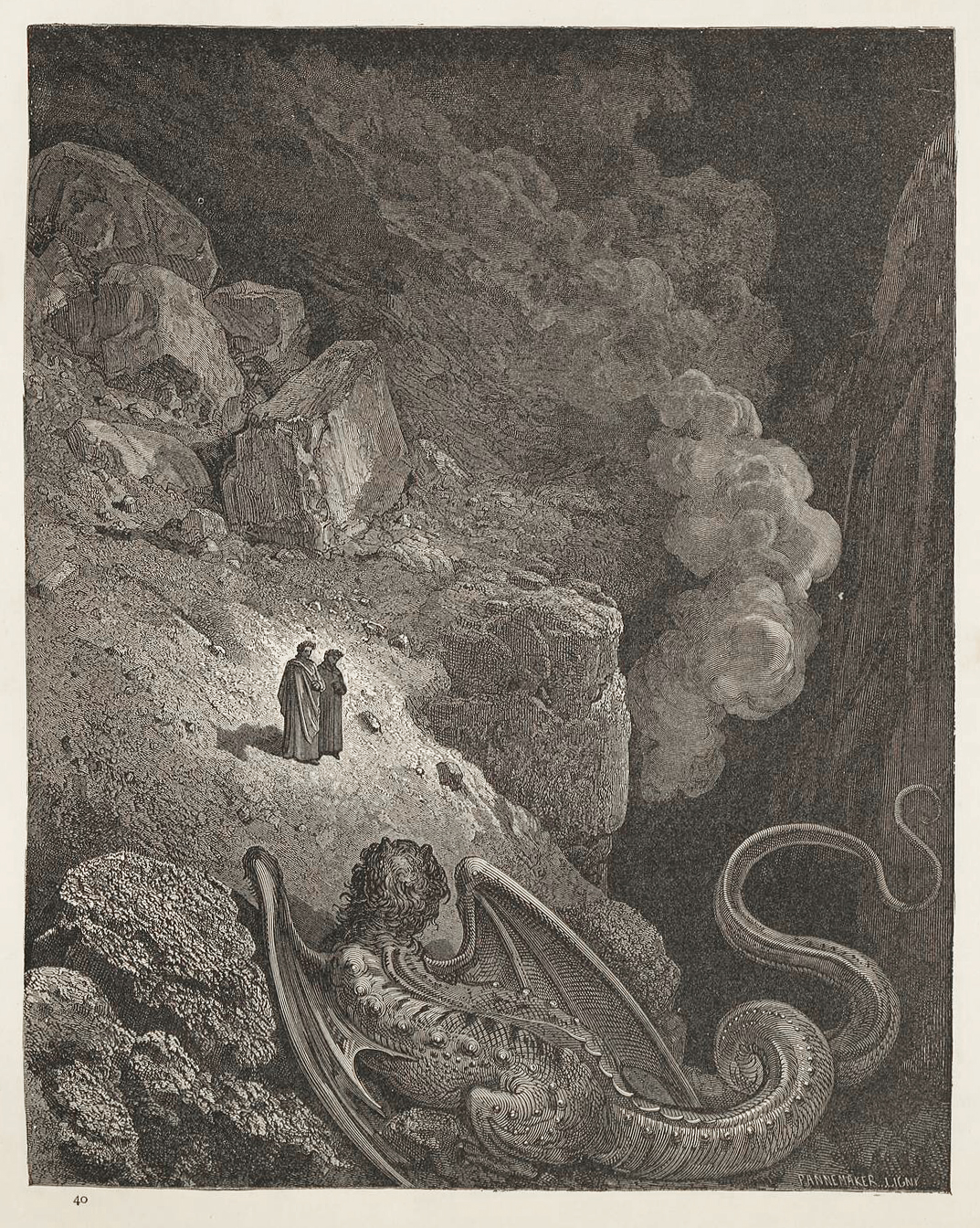Geryon

In traditional mythology, Geryon was a triple-headed - or in some versions, a triple-bodied (with, depending on the source, a varying number of heads) - monster. He and his two-headed hound Orthrus, the brother of Cerberus, were killed by Heracles during the hero's Tenth Labour, when he was tasked with stealing Geryon’s cattle.
Dante was likely aware of Roman sources for versions of the myth, but his Geryon differs from the original, likely marrying the conventional story with Pliny's description of a manticore from his Natural Histories (the ongoing influence of which can be seen in Edward Topsell's 1607 manuscript The historie of fovre-footed beastes, in the gallery below). In the Divine Comedy, although its triple nature still exists, Geryon appears as a monster with a reptilian body, a scorpion tail, hairy arms and 'the face of a just man'. In some renditions of the myth, Geryon enticed visitors to his kingdom only to rob and kill them, and therefore, despite his benign countenance, he represents fraud in the Eighth Circle of Dante’s Hell.
-

Gustave Doré, Inferno: Canto XVII, plate 41, The vision of hell by Dante Alighieri, trans. Henry Francis Cary, 1894. Gift of John McCutcheon. Rare Books, Archives & Special Collections -

John Flaxman, Gerion, Compositions By John Flaxman, Sculptor, R.A. From The Divine Poem Of Dante Alighieri, Containing Hell, Purgatory And Paradise, 1807, London : Longman, Hurst, Rees, and Orme. Rare Books, Archives and Special Collections -

Edward Topsel, Mantichora, wood engraving [in] The historie of fovre-footed beastes, 1607, London: printed by William Iaggard. Donated by Alfred Hart. Rare Books, Archives and Special Collections -

Gustave Doré, Inferno: Canto XVI, plate 40, The vision of hell by Dante Alighieri, trans. Henry Francis Cary, 1894. Gift of John McCutcheon. Rare Books, Archives & Special Collections